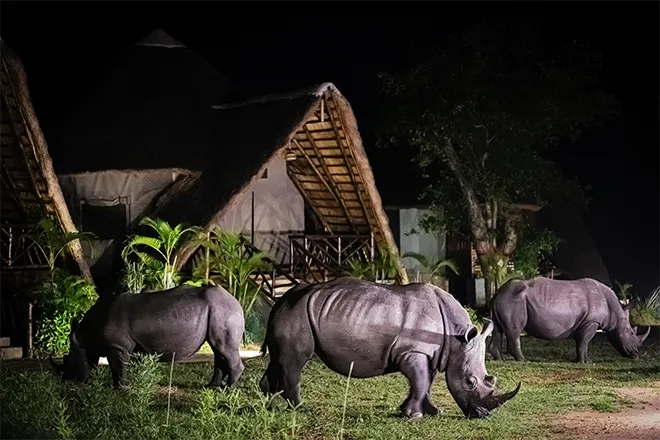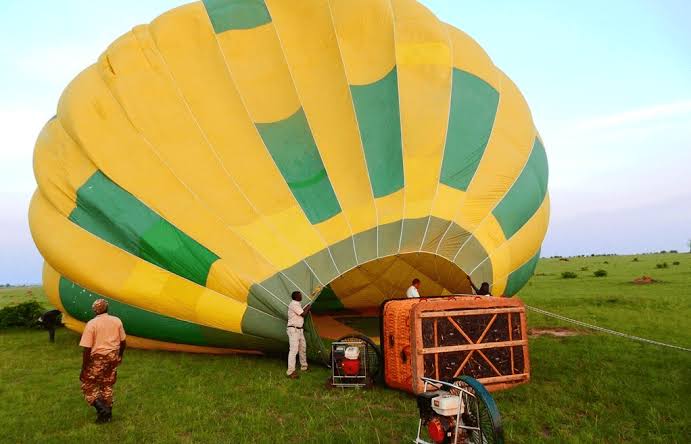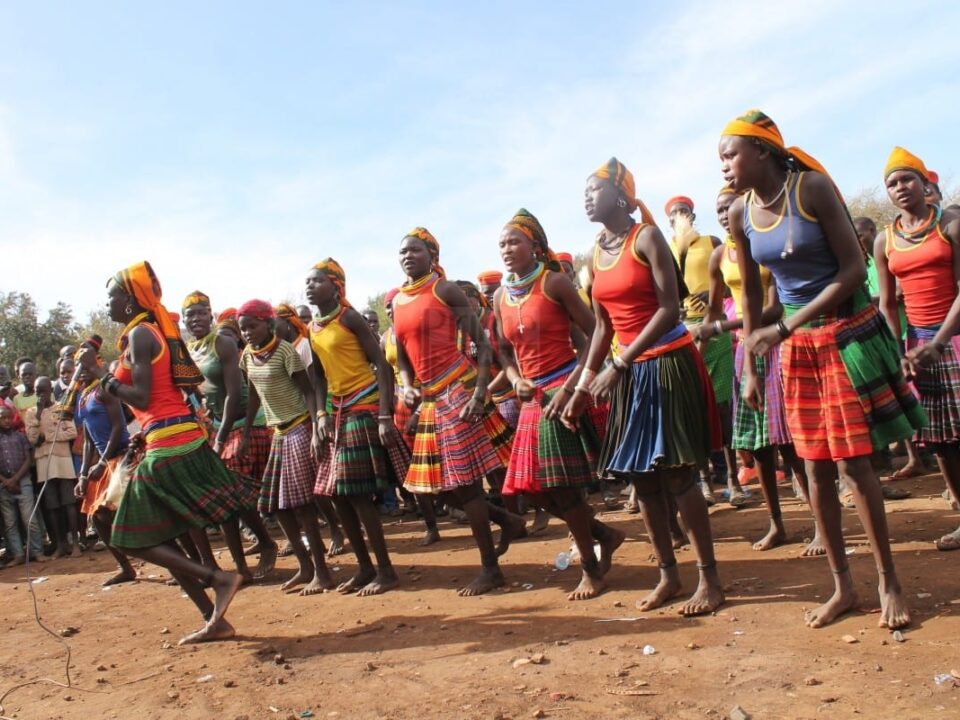- GET IN TOUCH WITH US:
- +256 753518160
- +256 777842166
- info@experiyatourcompany.com
Uganda Safari Tours with Rhino Tracking
November 21, 2025
Uganda Cultural Tours in Karamoja
November 21, 2025Uganda Tours and Conservation Experiences
Uganda, famously known as the Pearl of Africa, is a destination where adventure blends seamlessly with purposeful travel. Beyond its breathtaking landscapes, diverse wildlife, and vibrant cultures, Uganda has become a leading hub for conservation-based tourism. Today’s travelers seek more than sightseeing—they seek meaningful experiences that contribute positively to wildlife protection, environmental sustainability, and community development. Uganda Tours and Conservation Experiences offer exactly that: an immersive journey through pristine ecosystems paired with opportunities to support and learn from active conservation efforts.
From gorilla trekking in Bwindi, rhino tracking at Ziwa, and chimpanzee research in Kibale Forest, to community tourism projects and anti-poaching initiatives, Uganda offers countless ways to engage in responsible and impactful travel. This detailed blog explores how conservation and tourism intersect in Uganda, the best destinations for eco-conscious travelers, what to expect on conservation tours, and why these experiences create a deeper connection to both people and wildlife.
Why Uganda Is a Leader in Conservation Tourism
Uganda’s conservation success stories have attracted global attention and inspired travelers from around the world. The country has made remarkable progress in restoring and protecting its wildlife through strong government policies, community partnerships, and responsible tourism practices.
Thriving Protected Area System
Uganda has more than 10 national parks, 12 wildlife reserves, and multiple sanctuaries—all actively managed to conserve biodiversity.
These include:
Bwindi Impenetrable National Park
Queen Elizabeth National Park
Kibale Forest National Park
Murchison Falls National Park
Mgahinga Gorilla National Park
These areas are home to endangered species such as mountain gorillas, chimpanzees, rhinos, and shoebill storks.
Community Engagement in Conservation
Uganda’s conservation success is strongly rooted in community involvement. Locals living near national parks benefit from conservation through employment, revenue-sharing, community tourism, and sustainable livelihood projects.
Successful Species Recovery Programs
Uganda is a global model for wildlife recovery, particularly in gorilla population growth and rhino reintroduction. These efforts are supported by tourism revenue.
Responsible Tourism Regulations
Strict guidelines protect wildlife, limit visitor numbers, and ensure ethical practices—especially in primate tourism.
Top Conservation Experiences in Uganda
1. Gorilla Trekking in Bwindi Impenetrable National Park
Gorilla trekking is Uganda’s flagship conservation experience, offering travelers a rare opportunity to observe mountain gorillas while contributing directly to their protection. A significant portion of permit fees goes into habitat management, ranger salaries, anti-poaching patrols, and community development.
During a gorilla trek, travelers:
Hike through thick rainforest
Follow trackers to locate a gorilla family
Spend one magical hour observing behavior
Learn about conservation challenges
Support local communities near Bwindi
Bwindi is a UNESCO World Heritage Site and home to more than half of the world’s remaining mountain gorillas, making it a critical conservation area.
2. Gorilla Habituation Experience
This unique activity in Rushaga and Nkuringo sectors allows travelers to spend up to four hours with a gorilla family undergoing habituation. Visitors join researchers and trackers in studying gorilla behavior.
This experience:
Promotes long-term conservation
Supports scientific research
Provides rare photography opportunities
It is ideal for travelers who want deeper educational encounters.
3. Rhino Tracking at Ziwa Rhino Sanctuary
Once extinct in Uganda, rhinos are slowly being reintroduced thanks to Ziwa Rhino Sanctuary. Here, visitors can track rhinos on foot while learning about breeding programs, anti-poaching measures, and habitat protection.
Additional conservation experiences include:
Shoebill wetland monitoring
Nature walks
Community education programs
Rhino tracking is one of the most impactful conservation activities in the country.
4. Chimpanzee Trekking and Research in Kibale Forest
Kibale Forest is home to over 1,500 chimpanzees and the greatest primate diversity in Africa. Chimpanzee trekking helps fund forest protection and scientific research.
Visitors can participate in:
Standard chimp trekking
Full-day chimp habituation
Primate monitoring
Bird conservation projects
The experience is a blend of wildlife observation and ecological learning.
5. Conservation Safaris in Queen Elizabeth National Park
Queen Elizabeth National Park supports conservation programs focused on lions, elephants, and community coexistence. Tree-climbing lions of Ishasha are a highlight, but visitors can also engage in:
Human-wildlife conflict mitigation
Lion monitoring programs
Hippo and elephant research
Community-based tourism experiences
6. Shoebill Conservation in Mabamba Swamp
The Mabamba Wetland is a vital habitat for the rare Shoebill Stork. Canoe tours support local conservation efforts and protect this globally vulnerable species.
Birders also enjoy opportunities to observe:
African jacanas
Papyrus gonoleks
Malachite kingfishers
Local community guides play a major role in protecting the wetland.
7. Community Tourism Experiences
Conservation in Uganda goes hand-in-hand with community empowerment. Travelers can visit:
Batwa cultural communities
Kihambura women’s cooperatives
Ruboni Village near Rwenzori
Buniga Forest Walk conservation project
These experiences promote sustainable tourism by directly benefiting local people.
The Role of Tourism in Conservation
Tourism plays a crucial role in funding conservation efforts in Uganda. Revenue from park fees, permits, and guided activities supports:
Anti-poaching patrols
Wildlife rangers’ salaries
Research initiatives
Habitat restoration
Community development projects
Infrastructure for protected areas
For example, gorilla trekking alone contributes a substantial amount to Uganda’s conservation funding and creates local jobs.
Sample Uganda Conservation Safari Itineraries
7-Day Conservation Safari
Day 1: Arrive in Entebbe
Day 2: Mabamba Swamp Shoebill conservation tour
Day 3: Drive to Kibale Forest
Day 4: Chimpanzee trekking and Bigodi conservation walk
Day 5: Queen Elizabeth NP lion conservation program
Day 6: Ishasha sector tree-climbing lions
Day 7: Departure
10-Day Primate and Conservation Adventure
Includes gorilla trekking, gorilla habituation, chimp tracking, and community visits.
12-Day Rhino, Gorilla, Chimpanzee, and Wildlife Conservation Safari
Covers Ziwa Rhino Sanctuary, Bwindi, Kibale, and Queen Elizabeth NP.
14-Day Uganda Eco-Conservation Expedition
Ideal for students, researchers, and conservation travelers.
Best Time to Experience Conservation Tours in Uganda
Uganda is a year-round destination, but certain months offer better conditions:
Best Seasons (Dry)
June to September
December to February
Ideal for trekking, wildlife viewing, and photography.
Green Seasons
March to May
October to November
Lush landscapes, fewer crowds, discounted rates, great for birding.
Conservation experiences continue throughout the year.
Tips for Travelers Participating in Conservation Safaris
Pack eco-friendly travel essentials
Avoid single-use plastics
Respect wildlife distance rules
Follow ranger and researcher instructions
Support local communities by purchasing authentic crafts
Opt for eco-lodges and responsible tour companies
Travel with curiosity and respect for nature
Responsible tourism enhances conservation impact.
Why Uganda Tours and Conservation Experiences Stand Out
Uganda offers a powerful combination of biodiversity, meaningful wildlife interactions, and community-based programs. Travelers don’t simply observe nature—they actively support and protect it. Whether tracking gorillas, studying primates, monitoring rhinos, or participating in community projects, visitors contribute to Uganda’s conservation legacy.
Uganda’s conservation-focused tours offer:
Immersive learning
Close-up wildlife encounters
Cultural connection
Environmental awareness
Community empowerment
Every visit shapes the future of Uganda’s wildlife and rural communities.
Book Your Uganda Conservation Safari with Experiya Tour Company
Experiya Tour Company specializes in designing Uganda tours that blend adventure with meaningful conservation experiences. Their knowledgeable guides, customized itineraries, and strong partnerships with wildlife authorities ensure that every journey is ethical, enriching, and unforgettable. Whether you want to trek gorillas, track rhinos, join community projects, or explore Uganda’s national parks, Experiya will craft the perfect conservation-focused trip for you. Book your Uganda Conservation Experience with Experiya Tour Company today and support the protection of the Pearl of Africa.



